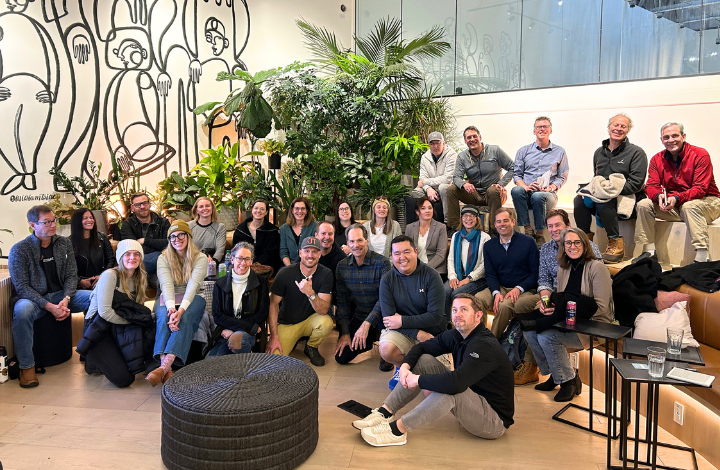You’re blogging for your coworking space, but you’re not confident in your strategy.
You know your blog could be a lot better but you aren’t sure where to begin.
I’ve been there.
Content marketing, and blogging, in particular, is made up of a lot of different parts. Ideally you can do a content overhaul and get a clear marketing strategy in-place, but you may not have that luxury right now.
There are, however, things you can do to tighten up your existing content, get it in front of more people, and engage your target audience. Here are nine ways to strengthen your coworking blog.
1. Blog Regularly
Readers love regular content. It’s far better to blog once a month than to blog three times one month then not again for two months. Regular content keeps you in front of your audience, it gives you original content to share on social media, and it establishes you as a reputable, valuable source for information.
Then there’s an SEO angle. Google loves sites that regularly post content. Doing so signals that the site is current and active. Plus, each new piece of content further clarifies to the search engine what your site is about. Blog regularly to keep readers, and Google bots coming back for more.
2. Know your Audience
I was talking to a small business owner recently at a networking event. I asked her who her target audience is and she replied, “Everyone.”
I kindly encouraged her to narrow that down. It can feel counterintuitive to niche down. It seems like the possibilities are endless if everyone is a potential customer. But think of it this way: If you’re in a new town and you’re looking for vegetarian food, which sounds more appealing: a restaurant that serves pizza, burgers, burritos and sandwiches, some of which can be made vegetarian, or a restaurant that specializes in vegetarian fare?
For me, I’d way rather go to a veggie restaurant than try to find something vegetarian at a restaurant that serves everything. I’ll have way more options and I trust that the people running the place know what they’re doing when it comes to veggie food.
The vegetarian restaurant doesn’t serve everyone—they serve people looking for vegetarian food. In a town with hundreds or thousands of restaurant choices, the veggie place has just differentiated itself and, in doing so, put itself at the top of my list of choices.
This is what you want to do.
It’s so important to know your audience. As a coworking space operator you might be tempted to think that your space is for everyone, but that’s likely not accurate. Is it designed for small teams? Is it designed for artists? Is it designed for people who need to make calls all day? Is it dog-friendly? Do you have a podcasting or video area? Do you offer in-house yoga classes, or a monthly accountability group?
These are things you may or may not have. The point is, there are some defining characteristics about your space and community that will be attractive to some people and not attractive to others. Get clear about who it is your space is designed for and make sure your content speaks directly to them.
3. Know your Goals
What are your content goals? You should have goals for your overall content marketing strategy, as well as each post on your coworking blog.
Your goals may include elevating your profile in the local coworking scene, educating your community about coworking, providing resources for solopreneurs, getting people to come take a tour, etc.
What are your goals and how can each piece of content support them?
4. Practice Smart SEO
Keywords and keyword phrases are the key to strong SEO. Which keyword phrases would you like to be found for? “Coworking in Austin”? “San Francisco Office Rental”? “Coworking Space with Childcare”? Get your keywords into your headline, into the introductory paragraphs, into your image names, and into your H1 and H2 tags.
5. Make a Clear Promise
Your headline should let readers know exactly what they’ll find in your post. I occasionally see headlines like: “A Dream that Launched a Business,” or “Networking Rocks!”
Not only do these types of headlines have no SEO juice, they also leave readers with little idea of what the post is about. Most people scroll by dozens of posts before they click on one to read.
Elevate your content above the noise by making a clear, engaging promise. Better headlines for the above examples would be: “How One Woman Turned a Childhood Dream into the Best Cupcake Shop in Miami” and “13 Must-Attend Networking Events for Santa Cruz Freelancers.”
6. Deliver on Your Promise
Once you’ve made a clear, engaging promise with your headline, follow through in the post. No one wants a bait-and-switch article that promises one thing and delivers something spammy, boring, unfocused or lukewarm.
7. Think Evergreen
If your goal is to drive traffic to your website, you have to think in terms of evergreen content. Rather than being relevant for a few days or a week, evergreen posts have a long life. These are the posts that are valuable, focused, aligned with the needs and interests of your target audience, and have strong SEO.
Evergreen posts not easy to predict—there’s no guarantee a post will become an evergreen. But, when one does, it will drive significant traffic indefinitely. Here are a few evergreen posts I’ve written, so you can see what types of posts stay relevant and continue to drive traffic long after they’ve been published.
22 Signs You’re in the Wrong Coworking Space
What Makes a Great Coworking Space [infographic]
The 11 Best Twitter Chats for Bloggers
Note: This one was written for 2016, but it continues to be one of my highest-performing posts.
8. Prioritize Scannability and Readability
You know how we all read online these days: we want information and we want it fast. Avoid big blocks of text that force readers to slow down and figure out what it is you’re talking about—because they generally won’t.
Break up text into scannable, readable, short sections so readers can see, at-a-glance, what you’re talking about.
To break up text, use short sentences, short paragraphs and subheaders, which are good for SEO, so remember to use your keywords in them. If you think this format of lists and scannable content is played out, think again. Lists and bite-sized posts remain popular because they work.
9. Include Calls to Action
Each piece of content should have a call to action (CTA). CTA ideas for a coworking space include: schedule a tour, subscribe to our newsletter, register for a free day of coworking, email us for more information, and share the post on social media. Don’t try to sell people with your CTA. Content is at the top of your marketing funnel. The goal is just to get them to engage a little further with you.
Related Posts
Content Marketing for Coworking Spaces: 6 Ways to Make Content Work for You
50+ Blog Post Prompts for Busy Coworking Space Teams
Content Marketing as a Bridge Between Your Purpose and Your Business
Photo: Phlubdr (CC-BY)





